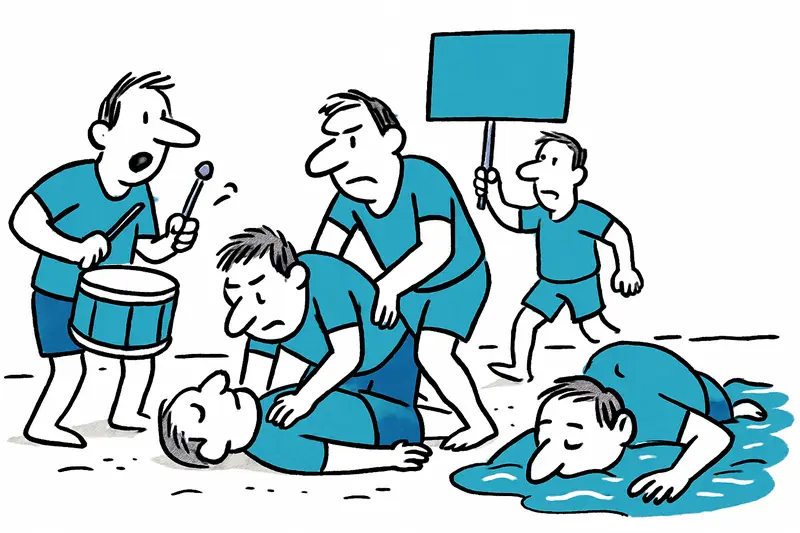With a striking action at Can Pere Antoni, the protesting lifeguards drew attention to staff shortages and poor working conditions.
Water, drums, and a clear message to policymakers
In the early Saturday morning, as the first tourists were still sipping their coffee along Passeig Marítim, about thirty lifeguards at Can Pere Antoni went into the sea and did not perform a normal shift. They conducted CPR drills on the sand, pulled injured "victims" ashore, and laid on their stomachs in the water — a deliberately theatrical gesture against the situation they see themselves in.
The action was loud, visible and film-ready: drums, signs, and drone footage documenting the whole event from above. Those strolling by stopped. Some shook their heads, others photographed with their phones — a typical Saturday morning, only with a serious backdrop.
What are the lifeguards fighting for?
The demands are practical: more staff, longer, more predictable shifts, meaningful distances between lifeguard towers, and working conditions that allow life on the island. In conversations on site, I repeatedly heard the same line: Not everything is about money, but without stable framework conditions the lifeguard service loses its impact.
What particularly annoys the crew is the practice of municipalities to set minimum services at 100 percent — many see this as an attempt to undermine the right to strike while also being a symptom of chronic staffing shortages.
The situation on the islands
The open-ended strike now affects several municipalities: Palma, Calvià, and places on Ibiza such as Sant Josep and Eivissa. The union reports that dozens of people have died on the Balearic Islands this year — many of them at unguarded beaches. This is the core message of the demonstrators: it is about concrete protection, not symbolism.
For the emergency services, housing is a constant issue. Those standing a tower for nine or ten hours need affordable accommodation afterwards — and in many places there simply isn’t any. That worsens staffing problems and leads to local overload.
What happens next?
The protests are not planned as a one-off. In October, several rallies are announced in Palma, including on Plaza España and in front of the Consolat de Mar. Negotiations with employers have recently remained inconclusive; in some cases, representatives of the administration did not show up for meetings.
On the promenade, I heard an elderly woman say: "We want them to stay on the beach — not just for photos." A sentence that sounds simple and right.
Anyone who watches the sea daily quickly notices: safety is not a figure to cut.
Similar News

Die Zeit auf Mallorca: Warum die Uhren hier anders ticken
Auf Mallorca läuft die Uhr offiziell anders als die Sonne — ein Erbe aus den 1940er-Jahren, das bis heute unseren Alltag...

Orange Weather Warning for Mallorca: Heavy Rain and Thunderstorms Set the Week
Aemet warns: Monday and Tuesday on Mallorca are under orange alert. Heavy rain, floods, and traffic disruptions are poss...

Life-threatening swimming accident in Ibiza: 73-year-old revived on the beach
During severe storms, a 73-year-old visitor swam despite a red flag. Lifeguards rescued her, and she is now seriously in...

Mummified Body Found in Abandoned House Near Santa Margalida
Between Can Picafort and Son Serra de Marina, teenagers discovered a mummified corpse in an abandoned house. Identity an...

Large Rockfall Blocks Ma-2141 Road Near Sa Calobra
After heavy rainfall, several rock blocks toppled onto the winding Ma-2141 toward Sa Calobra over the weekend. The road ...
